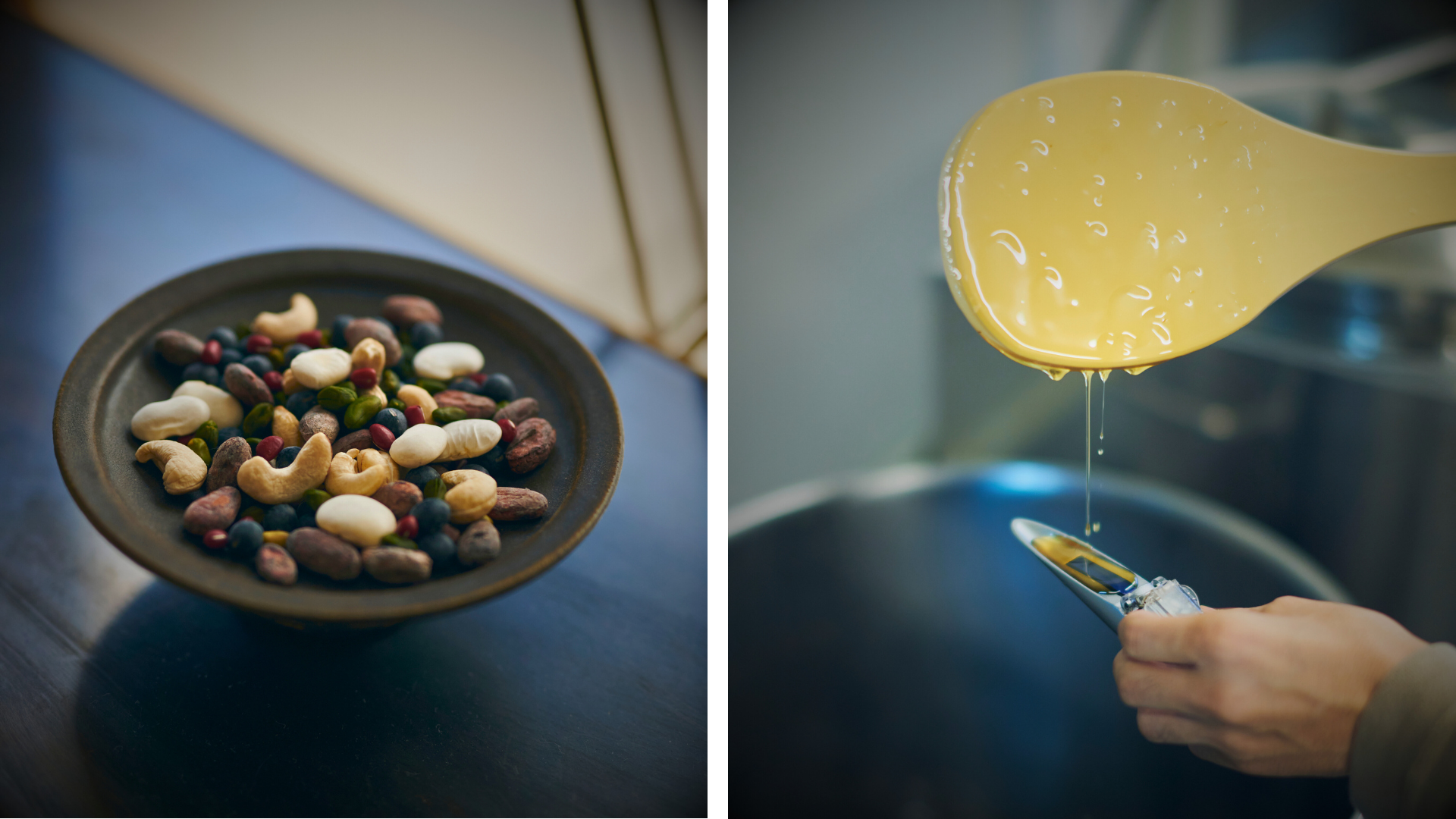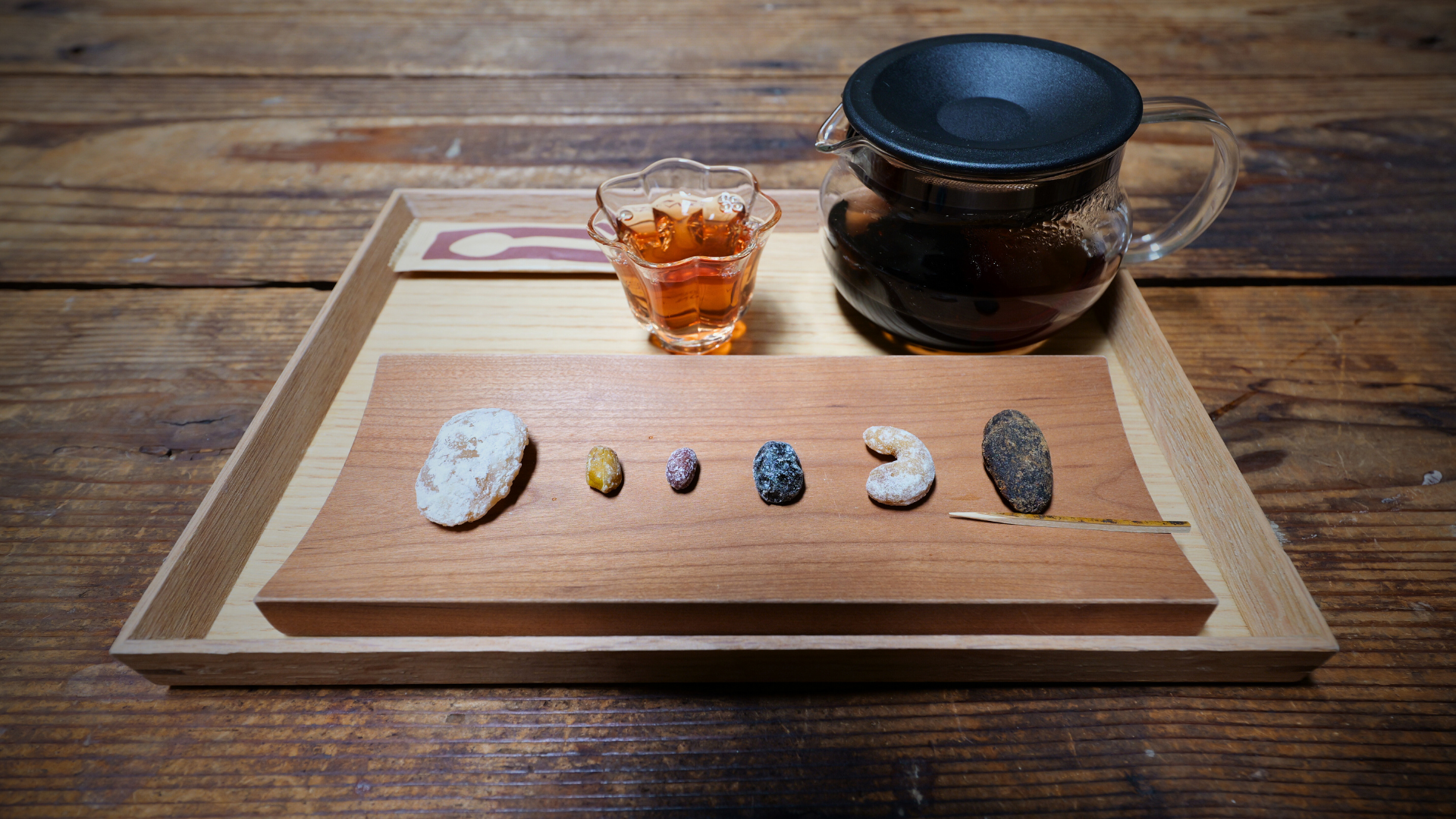"What comes to mind when you hear the word 'Amanatto'?"
That’s the question posed by Mr. Kondo, the fourth-generation owner of SHUKA, a traditional Japanese confectionery shop with a 100-year history. While continuing to craft this classic sugar-coated bean treat, he’s not simply preserving tradition—he’s facing a deeper question head-on: "Why do we continue making Amanatto today?"
For Kondo, Amanatto is evolving into a medium for expressing reverence for nature itself.
This article follows his journey—from grappling with the disconnect he felt as a young successor, to discovering a powerful symbolism in seeds, and finally to envisioning a bold new future: a 'theme park of seeds.'
The Journey Begins with Discomfort
"To be honest, I didn’t really eat Amanatto myself," Kondo admits. At 26, he joined the family business—not because he was drawn to the sweets, but because of heritage and duty.
"They’re too sweet and feel like an old-fashioned snack. It’s something pretty distant for young people. I questioned whether it made sense to keep making them in this day and age."
Amid rising health consciousness and reduced-sugar trends, Amanatto seemed to be left behind.

A Realization: A Sweet That Honors Nature
Then came a shift. Kondo realized, "Amanatto preserves the shape, color, and flavor of the original bean. It captures nature just as it is."
That’s when the meaning of continuing the craft began to blossom in his mind.
Rather than being outdated, it was a way to honor the blessings of nature—something deeply relevant today.
He adds, "Rice, wheat, coffee beans, chocolate—they’re all seeds. We live by eating seeds."
This awareness became the foundation of SHUKA’s guiding theme: "Cherish, Enjoy, and Nurture Each Seed."

Sustainability Begins with Enjoyment
"People don’t stick with things just because they’re good for them. Joy has to come first."
Rather than obligation, Kondo emphasizes delight as the starting point.
SHUKA presents Amanatto as more than a traditional snack. It’s a tasting experience—like a course meal—where each bean is savored in sequence, encouraging people to discover the nuances of color, aroma, and flavor, much like tasting wine.
They also collaborate with chocolatiers and citrus researchers, creating events that spark curiosity and joy—not just taste.

Growing Food, Changing Perspectives
Next, SHUKA is introducing a system that lets people experience Amanatto from seed to sweet.
"Beans are easy to grow," Kondo explains. "Even our azuki beans require little space or fertilizer."
That simplicity opens the door to growing experiences at home.
Eventually, SHUKA hopes to collect these home-grown beans and turn them into confections, culminating in a shared harvest festival. The idea is to transform how we view food—by involving people in growing, making, and tasting it.
A Vision: The Seed Theme Park
This idea has bloomed into an even bigger dream: a 'Seed Theme Park.'
"In Kyotanba, we have farmland where visitors can plant beans, cook them, and make their own Amanatto. There’s a hot spring, local sake, and lodging, too. It’s a complete, immersive experience."
It’s a place where people can play, learn, grow, and taste—all while connecting with the power of seeds. Kondo envisions a space where nature, people, and culture are gently intertwined.
Passing Down a Joyful Respect for Nature
Kondo’s goal isn’t just to sell Amanatto.
It’s to convey the weight of life within a single bean, the beauty of nature’s shape, and the value of nurturing—through joy.
"Delivering reverence for nature through enjoyment. That’s our role."
Though Amanatto may seem old-fashioned, it’s carrying forward values we need more than ever. SHUKA’s next 100 years are just beginning—with quiet determination and deep purpose.

Conclusion
This interview revealed how something as small as a seed can hold expansive thought, care, and vision.
SHUKA’s sweets are more than wagashi—they’re vessels of joy, warmth, and connection with nature and the future.
Within a single seed lives a story. Tradition isn’t just preserved—it’s questioned, enjoyed, and nurtured anew.
And perhaps, it all starts with tasting just one bean.
<Store Information>
SHUKA
3-1 Mibu Nishiotake-cho, Nakagyo-ku, Kyoto-shi, Kyoto 604-8856 (next to Torokuya)
Hours: 11:00 AM – 5:30 PM (2nd Floor Cafe, Last Order: 5:00 PM)
Closed: Mondays
TEL: 075-841-8844
E-mail: contact@shuka-kyoto.jp


